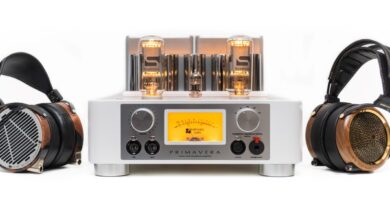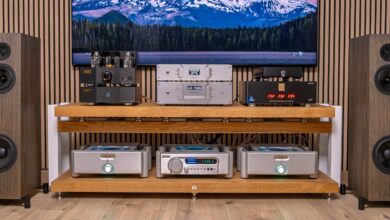Apertura Enigma MKII Review : Precision and Musical Insight
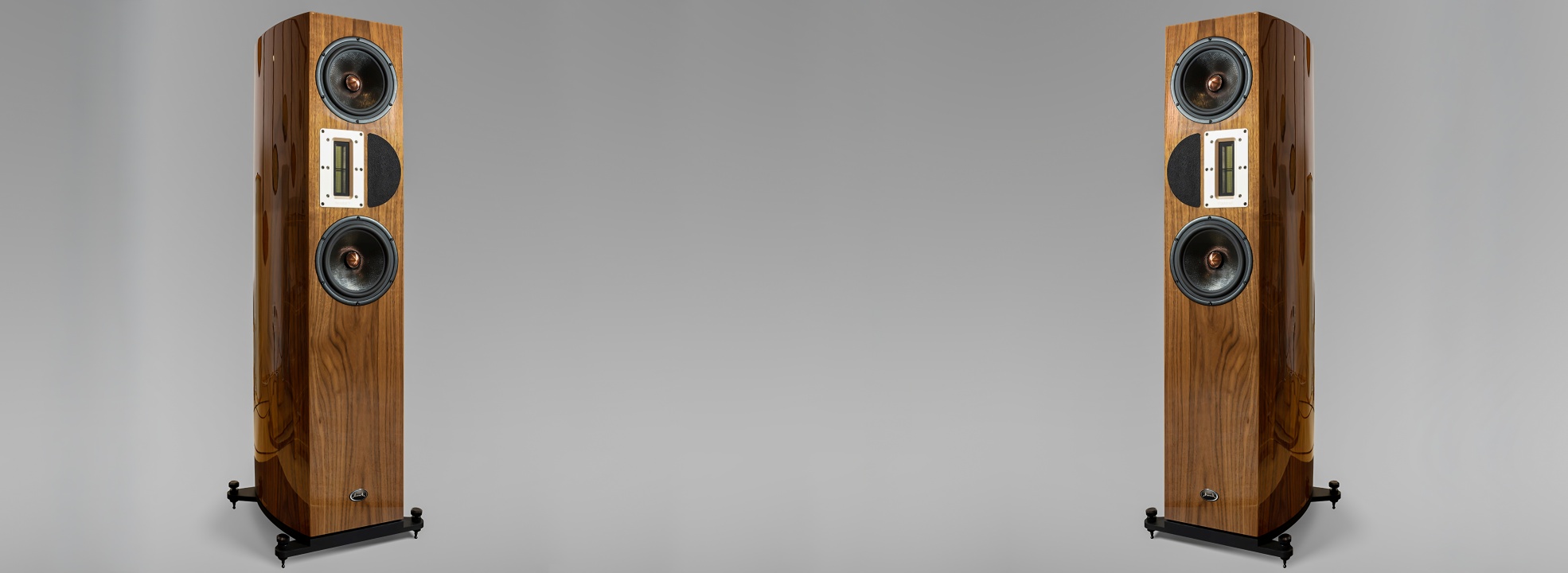
Introduction
If there is one thing that experience has taught us, it is that true flagships rarely need to shout. When we first stood in front of the Apertura Enigma MkII, there was no doubt: this is a statement loudspeaker, conceived as the very summit of what the French brand Apertura can achieve. We discovered an attention to detail and a hint at a deep philosophy, something that we were eager to discover….
Apertura’s story goes back over four decades, but its identity has always revolved around Christian Yvon’s obsession with phase linearity, time coherence, and that elusive sense of musical rightness. The Enigma MkII is the direct descendant of this vision: the most ambitious project the company has ever put forward, refined through countless iterations of cabinet geometry, crossover topology, and custom-made drivers.
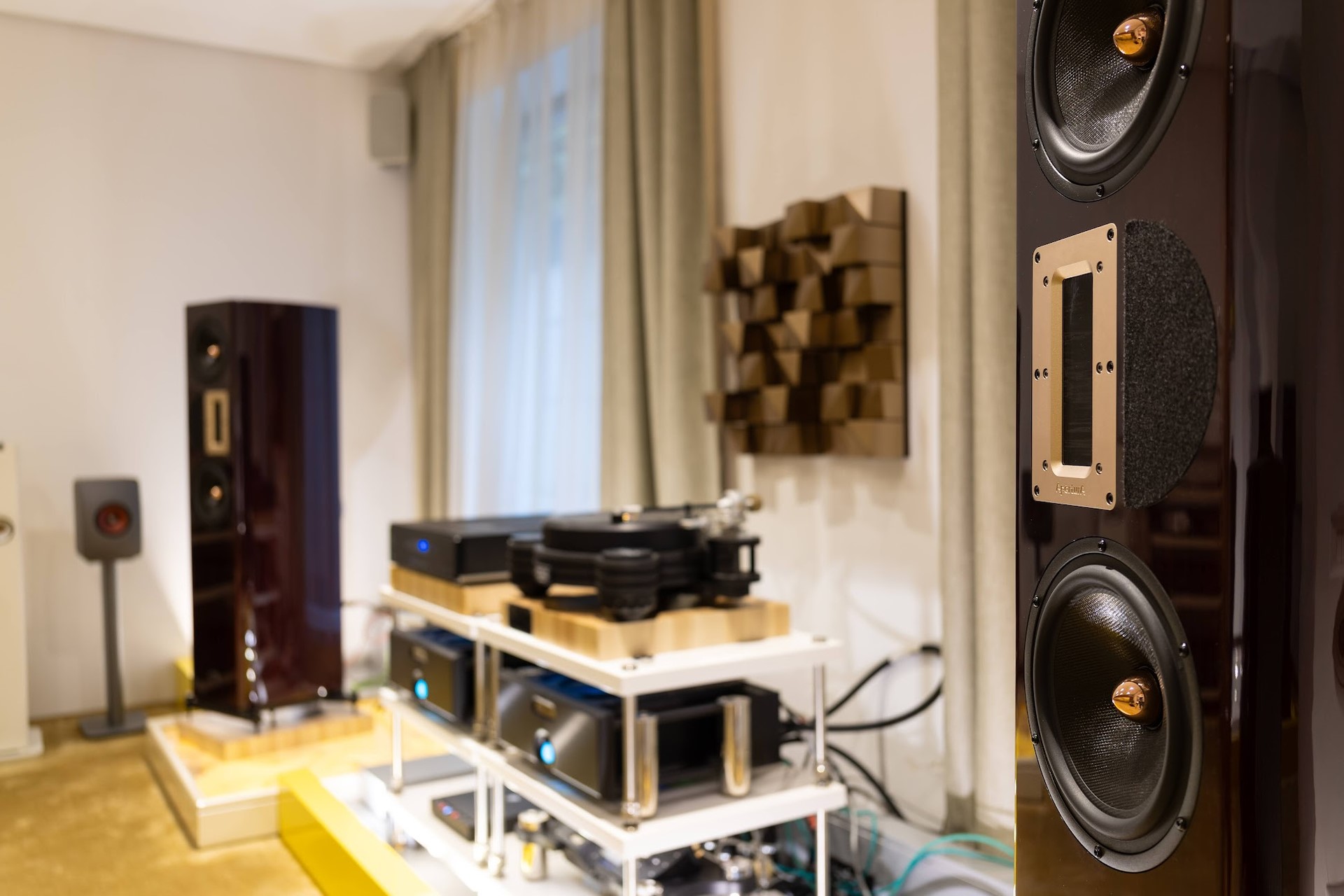
What follows is not just a technical analysis, but the story of what we heard and felt as we moved through genres, swapped electronics, and tried to answer the only question that matters at this level: does this flagship deliver something you cannot find anywhere else? For us, the answer wasn’t just ‘yes’, it came through a journey that gave us deeper knowledge and meaningful lessons.
Build & Design
If there is a single word that captures the Enigma MkII, it is “obsession.” From their design alone, it’s clear these speakers are exceptional. Every detail, material, and junction exists for a reason, the result of years of fine-tuning for purity and precision.
Apertura’s design ethos traces back to the early experiments of Christian Yvon, whose work on phase-coherent crossovers for Sonus Faber in the late ’70s planted the seed for everything that would follow. At the heart of the Enigma MkII lies the latest iteration of his “DRIM” crossover: Dual Resonant Intermodulation Minimum. This design, notorious for its complexity, is the core of Apertura’s approach. It is what allows these loudspeakers to achieve such impeccable time and phase coherence, even with drivers that could not be more different in impulse response.
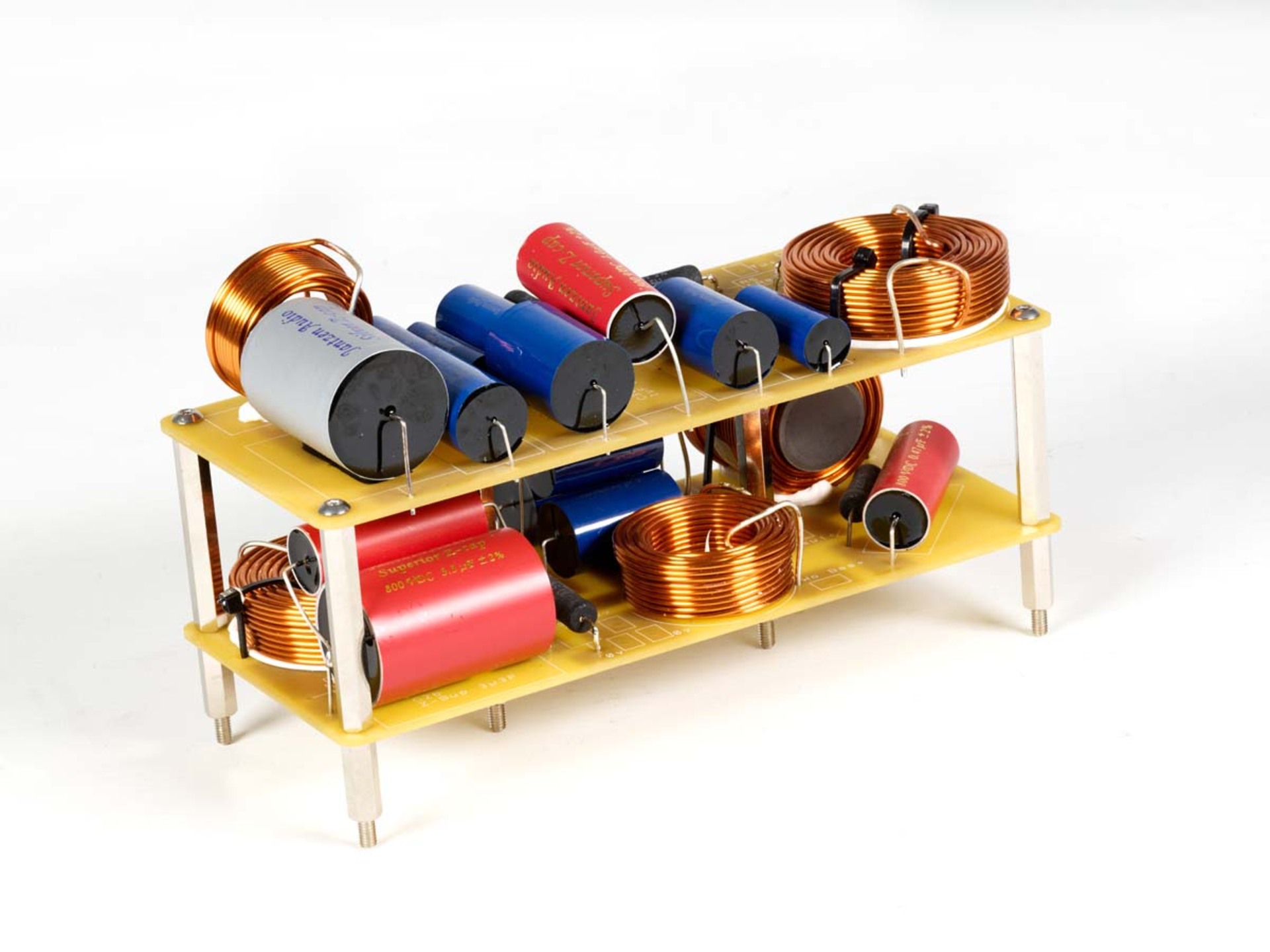
The crossover is split into two substantial circuit boards, each anchored to the speaker’s solid aluminum rear panel and populated exclusively with premium Jantzen components. Capacitors from different lines are carefully selected and matched to each driver, while thick copper traces and 2mm FR4 boards speak to the demands of both power handling and long-term reliability. The engineering is invisible from the outside, but becomes immediately clear while listening. This is the “invisible hand” behind the Enigma MkII’s seamless integration and transparency.
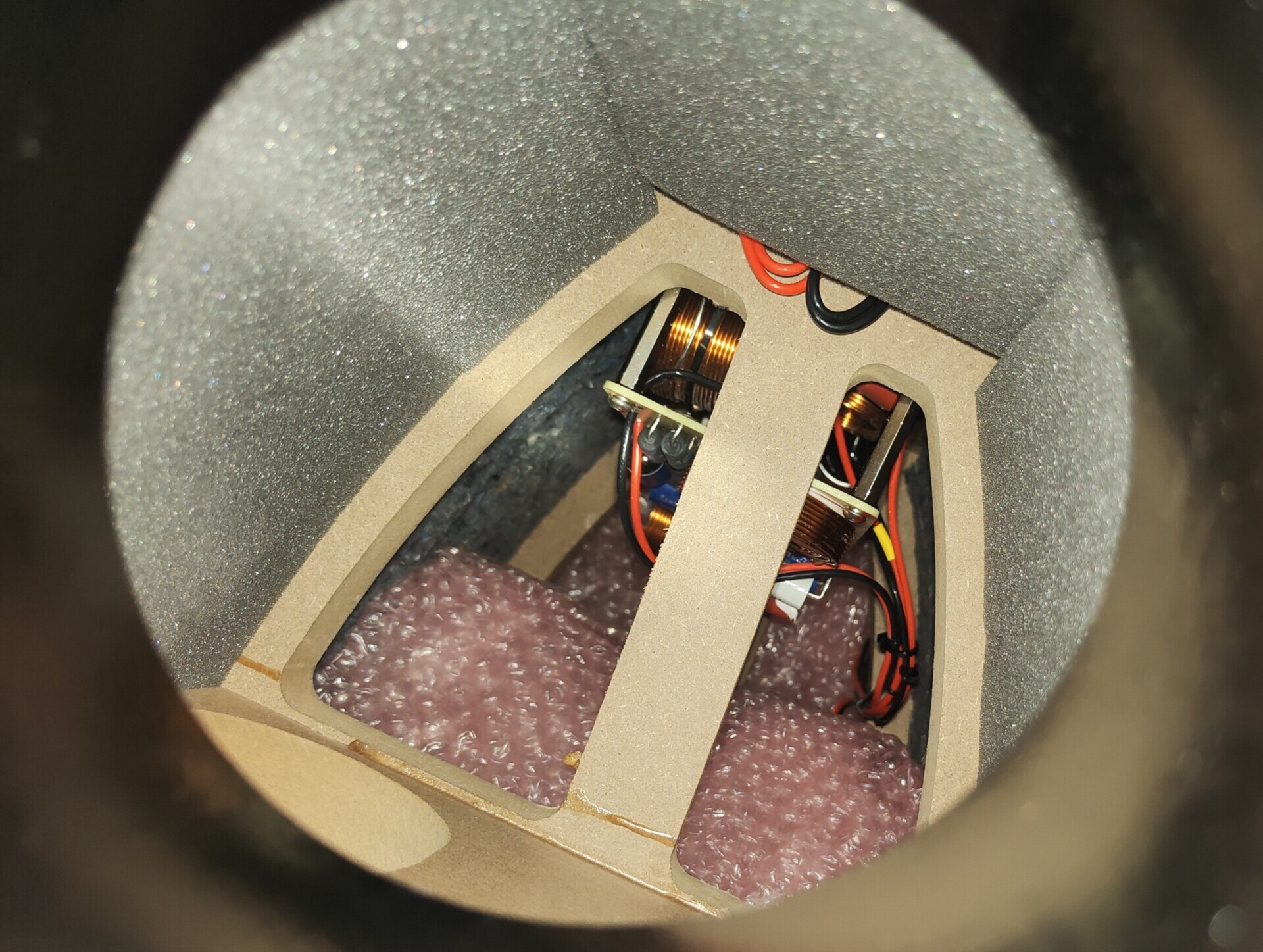
Cabinet design is equally uncompromising. The enclosure appears elegantly simple, but closer inspection reveals complex curves, a concave profile, and sides of unequal length. Only the top and bottom are parallel, every other surface is carefully angled, both to optimize diffraction and to minimize standing waves. These panels are made using multiple thin layers of MDF, laminated together to mimic the superior damping of much more exotic materials like carbon fiber. More than ten years of experimentation confirmed that this approach delivers the best combination of rigidity, resonance control, and cost-effectiveness. Four different damping materials, distributed across ten internal stiffening boards, further suppress any hint of cabinet coloration.
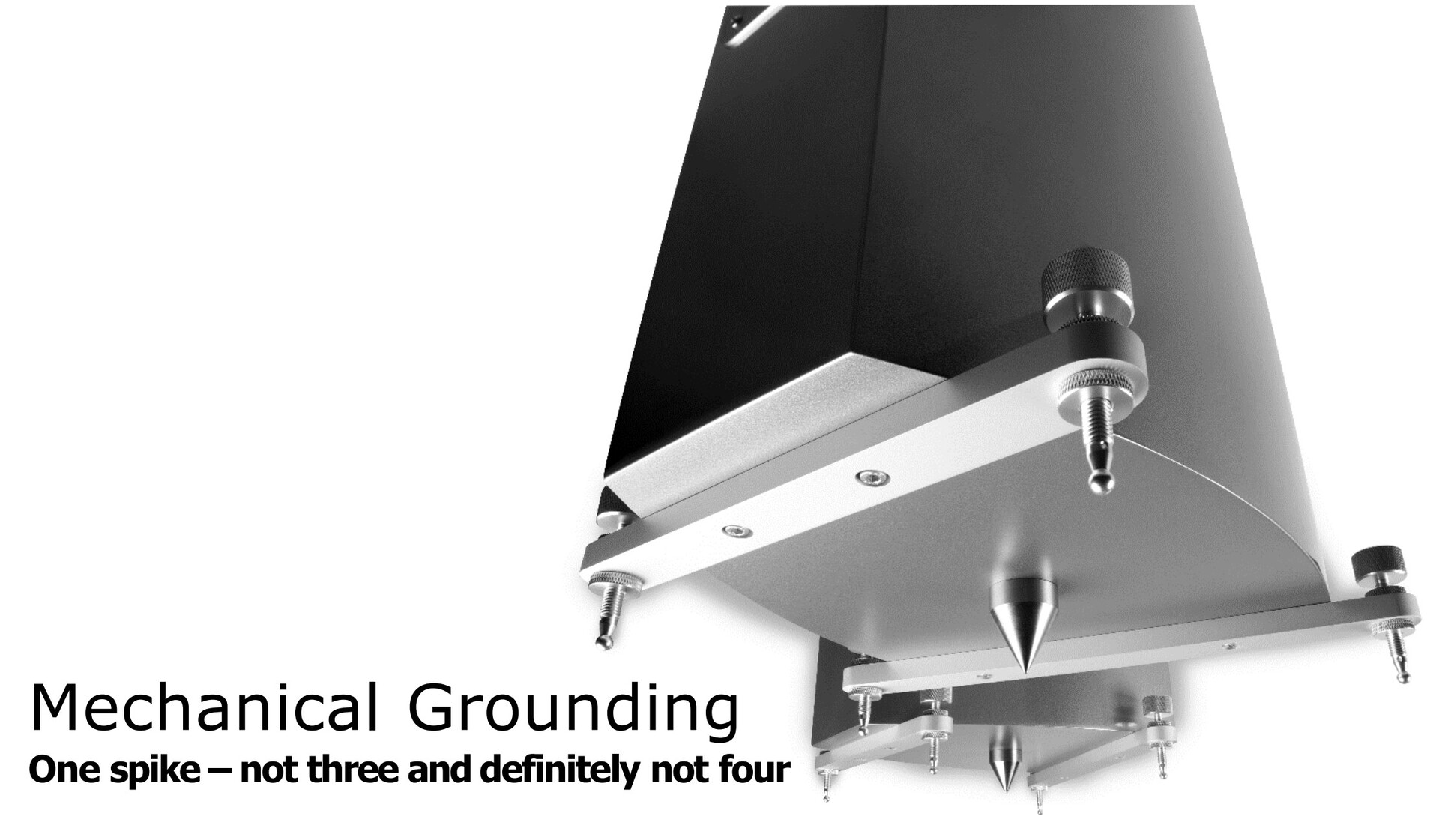
Even the mechanics of support have been rethought. The Enigma MkII uses a central spike beneath its exact center of gravity, stabilizing the entire speaker, with four additional round spikes for leveling and vibration control. We strongly believe details like these are not just for show; they are the product of constant questioning and relentless refinement.
As for the drivers, nothing here is off-the-shelf. The two 22-centimeter mid-woofers are custom designed by Seas in Norway, built exclusively to Apertura’s specification, and then extensively modified in-house. Each features an “isotactic Matrix” cone, a new generation composite made from woven polypropylene, chosen for its remarkable stiffness, low mass, and excellent damping properties. The voice coils are wound on titanium formers, enabling high linear excursion while maintaining lightness and rigidity. Heavy copper rings on the pole pieces, together with solid copper phase plugs, play a crucial role in reducing distortion and maintaining consistent performance across the full dynamic range. Apertura applies additional modifications to the motor assembly and implements precise mechanical damping, further refining each unit’s linearity and control. These efforts result in a mid-woofer capable of fast, controlled movement and an absence of unwanted coloration, contributing directly to the Enigma MkII’s trademark speed and physicality.

Above and between the mid-woofers sits one of the largest professional-grade ribbon tweeters currently available, featuring an advanced aluminum and polymer sandwich diaphragm for improved linearity and transient accuracy. Its effective piston area is four times that of the ribbon found in the smaller Armonia models, which allows for lower excursion, dramatically reduced distortion, and far greater headroom at both low and high listening levels. The tweeter is further customized at the Apertura facility, receiving a specially damped faceplate, optimized EMI shielding, and bespoke mechanical adjustments for maximum precision. All drivers, both tweeter and woofers, are individually measured and meticulously hand-matched for each speaker pair, ensuring absolute consistency and the tightest possible integration. While the visual arrangement may appear similar to a D’Appolito array, in reality, the topology is unique to the Enigma MkII: both woofers operate in parallel and the acoustic center is aligned exactly with the ribbon, creating seamless integration and a unified sound field.
The enclosure design and loading principle set the Enigma MkII apart. Rather than following a conventional bass reflex or a pure transmission line approach, Apertura employs a sophisticated hybrid solution. The enclosure uses a large, bottom-firing bass port, twelve centimeters in diameter and running nearly the entire length of the cabinet. This vented system leverages both the speed and damping benefits of acoustic line loading and the deep extension of traditional bass reflex, providing powerful, controlled low frequencies with minimal port noise. The enclosure itself is sculpted with two curved side panels of different lengths, no parallel surfaces between front and back, and multi-layer laminar construction. Internal multi-cavity bracing and a variety of damping materials work together to eliminate resonances and further optimize driver performance. All these engineering choices result in a bass response that is deep, clean, and authoritative, with a sense of scale and physicality that underpins the Enigma MkII’s sound signature.
In summary, every aspect of the Enigma MkII is the result of a passionate attention to detail, from the invisible labyrinth inside the cabinet to the unique crossover and fully bespoke drivers.
Placement & Setup
Our listening sessions took place at the AVstore showroom, using a setup that leaves no room for doubt: JK Acoustics Ultimate DA-Converter, 3D Lab Nano Network Player Signature V5, Chord Ultima 3 monoblocks, and a rotation of preamplifiers that included the Cary Audio SLP-05, Chord Ultima Pre 2, and the Aesthetix Calypso. Every variable was optimized to let the Enigma MkII reveal exactly what it can do, and it did not take long for these loudspeakers to reveal their character.
We performed several in-room measurements at a distance of 1 meter to get a general sense of the Enigma MkII’s behavior. As expected, these measurements mostly reflect the influence of the room and speaker placement, especially in the bass region, rather than revealing the true, intrinsic response of the loudspeaker itself. While useful for confirming proper setup and identifying broad trends, these measurements do not capture the full capabilities or unique qualities of the Enigma MkII. Ultimately, the listening experience told us far more than any microphone could.

Below you can see three measurements, each taken at a different angle: one on-axis, and two others at 30 degrees to the left and right. Due to the Enigma MkII’s asymmetric front panel, we observed two distinct types of tonal character changes when moving from one side to the other. These differences were not just visible in the measurements but also apparent during our listening sessions. This only reinforces the importance of careful placement and adds a need to experiment with positioning in order to achieve the best and most personally satisfying sound. We feel the Enigma MkII rewards those who invest the time to dial in its setup according to their room and preferences.
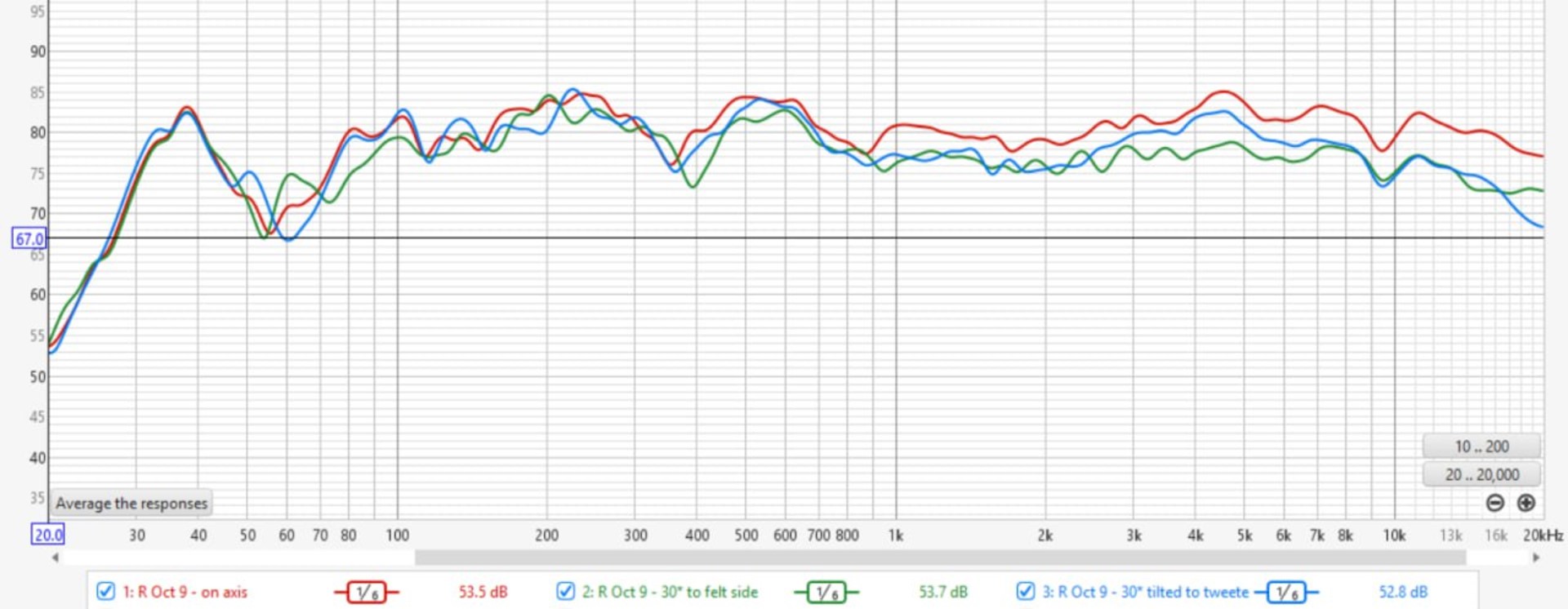
Naturally, bass response is heavily influenced by room modes, positioning, and boundaries. The low-frequency region should always be taken with a grain of salt, since the result can vary dramatically from one space to another. We recommend focusing on what happens from around 200 Hz and above, as this more accurately reflects the speaker’s own character.
It is also important to remember that measurements, especially in-room, do not tell the whole story. They provide almost no insight into time characteristics such as speed, precision, and control, and they cannot capture the width, depth, height, or true three-dimensional nature of the soundstage. While measurements can show us a tendency toward airiness or sibilance in the treble, they say very little about the transparency, precision, or articulation capabilities of the tweeter itself. Similarly, they cannot reveal the dynamics or micro-dynamics of the loudspeaker, and while they say something about timbre, that remains only a small part of the story. Most importantly, measurements tell us nothing about the loudspeaker’s ability to convey emotion through richness and harmonic complexity.
This is why we rely on extended listening and strive to cover all these subtleties and nuances in our reviews.
System Setup & Matching
For our evaluation, we focused on eliminating variables in order to reveal the Enigma MkII’s authentic voice. Placement followed both manufacturer recommendations and our own experience: a moderate distance from all walls, ribbon tweeters always facing inward, and a slight toe-in. The thoughtfully engineered cabinet geometry and hybrid loading made these speakers less sensitive to room anomalies than many rivals, but careful positioning still delivered audible gains in bass articulation and soundstage focus. Careful placement also revealed the differences we could obtain in regards to timbre when playing with toe-in.

Our playback chain started with the 3D Lab Nano Network Player Signature V5, feeding the JK Acoustics Ultimate DA-Converter. This digital front end was chosen for its neutrality and resolving power, letting us attribute every shift in tonality or spatial focus directly to the loudspeakers.
Power amplification was handled by the Chord Ultima 3 monoblocks, offering both grip and agility to control the large custom Seas woofers. This combination ensured that the Enigma MkII’s dynamics and scale were allowed to unfold with authority.
To explore the loudspeaker’s response to upstream character, we alternated between three preamplifiers. The Cary Audio SLP-05 brought warmth, dynamic drive, and emotional engagement. The Aesthetix Calypso offered a more analytical perspective, enhancing micro-dynamic detail and presenting music with more precision. Chord brought another layer of dynamics, enhanced soundstage precision, and bass articulation. Each preamplifier highlighted different strengths of the Enigma MkII, and also consistently revealed the true nature of every upstream component.
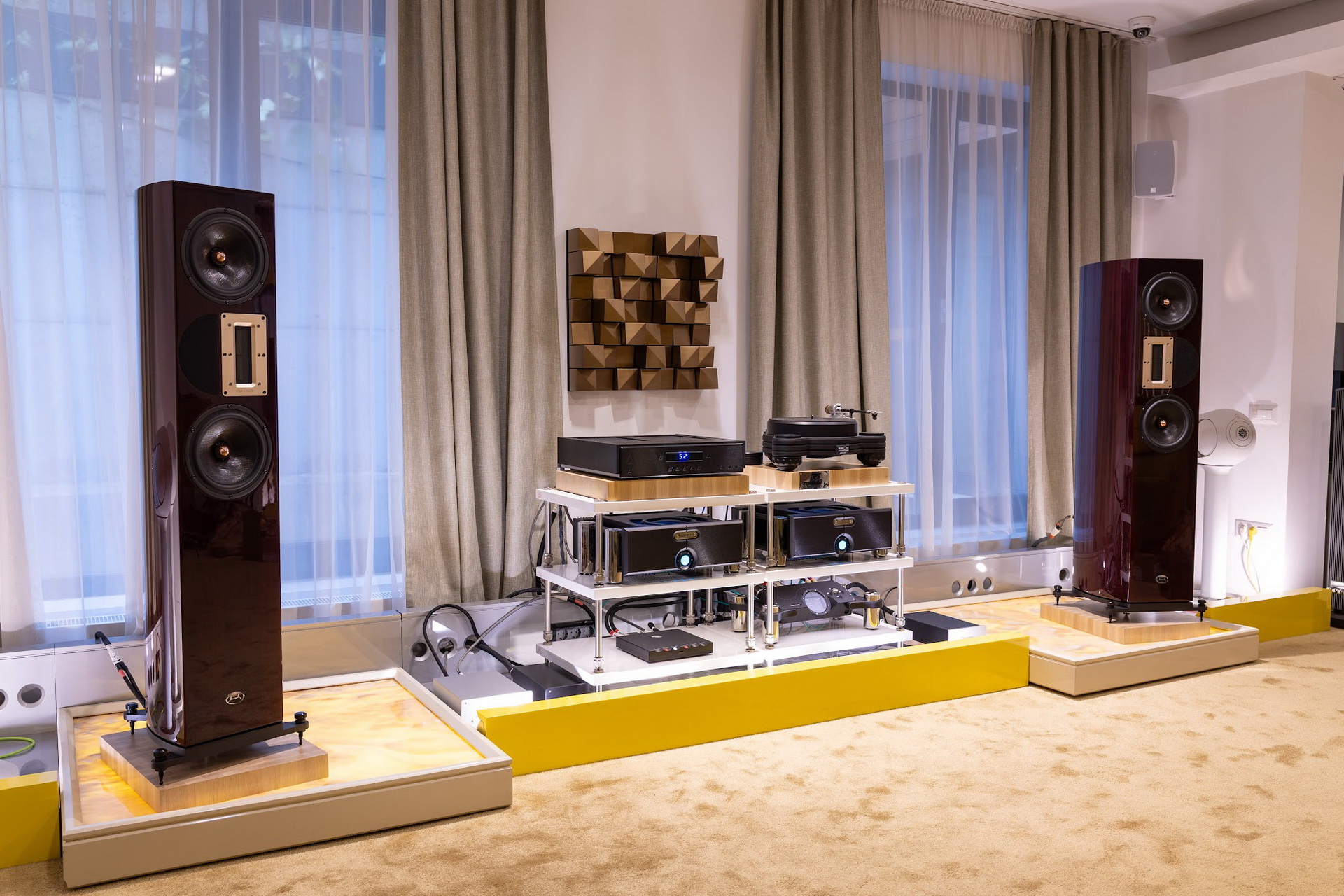
Throughout all these changes, the Chord monoblocks kept the bass perfectly controlled, while integration between the custom woofers and ribbon tweeter stayed seamless. Staging and imaging remained precise at every volume level and with every genre.
In summary, the Enigma MkII demands and rewards a reference-level chain. We appreciated that rather than imposing its own character, it exposes both the strengths and weaknesses of everything before it. For us, this is one of the highest praises that can be paid to any loudspeaker.
Listening Impressions
The moment we began our first session with the Enigma MkII, it became clear this is not a loudspeaker that reveals its full measure in a single track or brief demo. Its true character unfolds gradually, through hours of listening and across an intentionally diverse set of genres and system tweaks. It is a study in layering, spatial insight, and the way space breathes between the notes.

With Schiller – Metropolis, bass reproduction immediately set a new standard. The sense of articulation
and sub-bass presence was exceptional, with kick and bass lines delivered with impressive clarity and drive. The Enigma MKII, powered by the Chord monoblocks, offered a physical sense of energy that was always controlled, never bloated. For sheer macrodynamic authority and bass layering, we found ourselves giving full marks, but found the sound a bit lacking in the micro-dynamics approach when playing on a much lower level, close to 70 dB.
On Ram Dass – To Become Born, the Enigma’s mastery of physicality and spatial layering came to the forefront.

We could feel the strings being plucked in the room, and the three-dimensionality was very accurate, with tonal balance feeling natural and satisfying. The voice, performed by Matías Da Via, carried an undeniable physicality and a strikingly live, powerful presence, something we rarely encounter, even among high-end reference systems.
This sense of true physicality, of palpable energy, was a highlight for the Enigma MkII. However, we must note that at times, the voice revealed a slight nasality, an overtone in the midrange that did not fully convince us and detracted a bit from the otherwise captivating realism. Even so, the sheer force and immediacy of the vocal presentation stood out as something truly special.

With E-Mantra – Silence, we paid close attention to micro-dynamic resolution. While the overall coherence and airiness were impressive, we found ourselves wishing for just a bit more micro-dynamic expressiveness. Subtle inflections and fine textures were certainly present, but when compared to the very best systems, there was a slight sense of restraint at the smallest micro-dynamic gradations.
On the other hand, the Enigma MkII delivers macrodynamics on a scale that is genuinely difficult to put into words. The sense of presence, sheer force, and physicality, combined with its SPL capabilities and bass extension, transformed this track into a live experience that is almost impossible to achieve outside of a concert hall. The impact, authority, and room-filling energy on offer here were simply sensational. “Sensational” is the only word that fits the experience!
Switching to Yosi Horikawa – In the Wind, the Enigma MkII revealed astonishing depth in the subsonic region, rendering the 29 Hz foundation with impressive weight and realism.
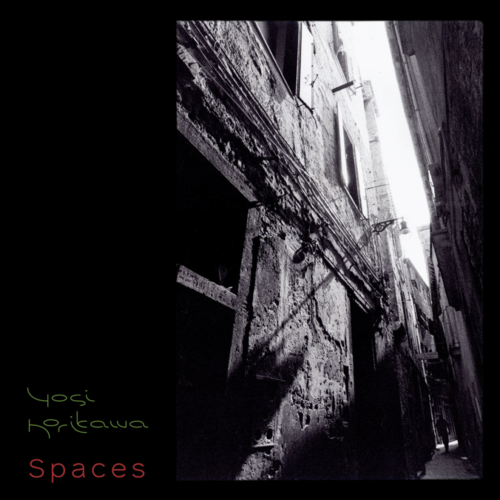
The presentation was exceptionally dynamic and physical, with a tangible presence that filled the room. Sub-bass served as a firm anchor for the entire soundstage, giving the music authority and letting every element breathe naturally. What impressed us most was the soundstage itself: profoundly three-dimensional, spatial, and projected with a holographic precision that placed us right at the center of the recording. On the best material, it became immediately clear just how much musical information can be lost without a truly capable system.
Salvatore Licitra – Je crois entendre encore offered another perspective on the Enigma’s midrange, occasionally introducing a unique tonal shading that added personality to the vocal presentation.

This subtle character never overshadowed the experience, which was always deeply physical and convincingly live, with the voice projected into the room with remarkable presence. The sense of scale was truly impressive, with both sound pressure and body that are rarely matched. Instruments layered naturally behind the voice, and echoes and spatial cues were delivered with an engaging sense of air and precision. On this track, the Enigma demonstrated its ability to combine detail, space, and sheer immersion in a way that evokes the energy of a true concert experience.
On Eguana – Deep Sleep and other electronic tracks, the Enigma MKII created a tangible sense of scale and physical impact, with sub-bass that could not only be heard but also felt.
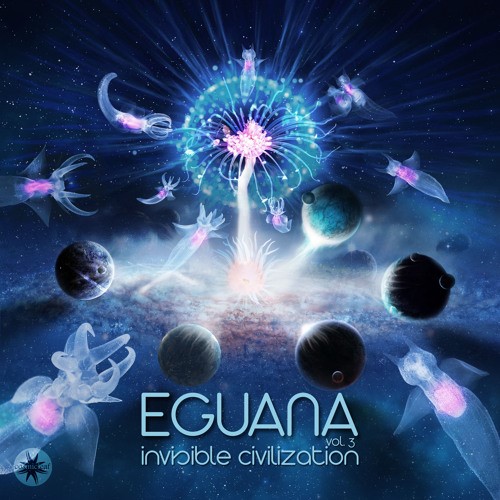
This deep foundation elevated the entire soundstage, enhancing both the sense of space and the overall presence in the room. The result was a presentation that felt expansive and immersive, the sub-bass adding weight and dimension far beyond what we typically expect from a domestic system. Macro and micro-dynamics blended well here, each element coming and going with intention and clarity. Perhaps most impressive was the ability of the Enigma MkII to deliver sound pressure levels worthy of a live concert, a quality that left us thoroughly impressed every time the music demanded it.
With Asura – Frontiers and David Whaler – Kyoto Mist, the Enigma MKII produced a soundstage that was both immersive and expansive, with precise imaging and a massive sense of space.
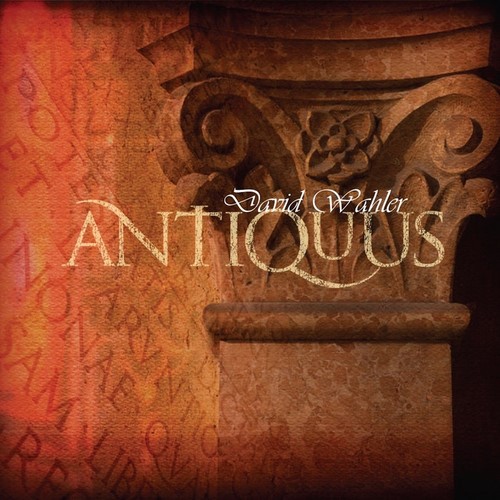
We believe this is a loudspeaker that genuinely encourages higher listening levels, not to compensate for shortcomings, but to fully reveal its capabilities, it’s presence and energy. It is at its most impressive when allowed to stretch its legs, filling the room with both power and atmosphere!
Haven – Till the Morning revealed the Enigma’s ability to convey body and weight, giving vocals, and strings a striking sense of substance and dimensionality. The low end was particularly well defined, with three-dimensionality that held steady even as the music grew in scale. The overall sense of depth and realism remained a clear strength throughout the entire song.
On Mike Dawes – Jump, the physicality of the guitar percussion was unmistakable. Dynamics were robust, articulation remained excellent, and coherence from top to bottom was highly impressive.
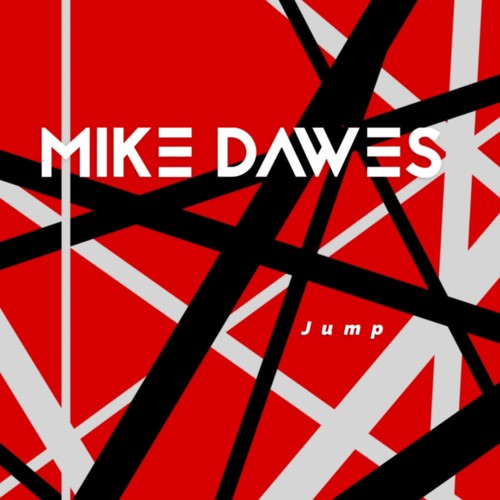
What truly stood out was the unmistakably live character of the presentation, with impactful transients, commanding sound pressure levels, and an overall live-like energy that is rarely encountered in hi-fi systems. This was a quality we deeply appreciated, and it speaks volumes about the Enigma MkII’s capabilities. In fact, this ability to consistently evoke a sense of live performance became one of the defining highlights of our listening experience, impressing us time and again across a wide variety of tracks.
With Heilung – Traust, the speaker showcased its ability to retrieve micro-vibrations and ambient details, especially at the start of the track. Soundstage was very good, but we did notice that the bass could sometimes verge on overpowering. The lack of user-adjustable port tuning was felt, and while bass was rarely out of control, there were moments when a bit more flexibility would have been welcome.

During our very first listening sessions, we noticed what seemed to be a subtle nasality in the midrange, particularly on certain male vocal recordings. At that point, we wondered if this aspect might become a recurring distraction over time or affect our enjoyment on specific tracks. However, as we continued our evaluation and allowed the Enigma MkII to undergo a proper and thorough break-in period, our initial impressions began to shift. Over the course of many hours of listening, the character of the midrange evolved significantly. What had first presented itself as a concern gradually receded until it disappeared altogether. By the end of our extended review period, that initial trace of nasality was no longer detectable, replaced instead by a midband that was both clean and natural across all material we played.
This experience reminded us just and how important it is to allow time for drivers and components to reach their true potential before drawing any firm conclusions. What we originally perceived as a nuisance ultimately proved to be a non-issue, and the Enigma MkII’s midrange settled into a completely convincing and satisfying character that never distracted from the music.

With Dead Can Dance – Into the Labyrinth, the Enigma MkII stepped into a sonic environment that plays directly to its strengths. This album thrives on atmosphere, spatial layering, and the interplay between voice, percussion, and resonant acoustic space, and, as was expected, the speakers revealed an immersive world with authority and nuance.
On Yulunga (Spirit Dance), the sense of physical presence was immediately apparent. Percussive strikes landed with real weight, with actual, real, true-to-life feeling, helping form a strong foundation that helped the sound expand into the room. The slow swell of air, the dense layering of shakers and drums, and the subtle reverberant field behind them created a soundstage of impressive depth. The Enigma MkII allowed each layer to occupy its own defined space, preserving clarity while maintaining the music’s ritualistic, entrancing power. The presentation here was majestic, grounded, and deeply atmospheric.
On another wonderful track from the album, Towards the Within, we found a demonstration of force in spatial precision:
the reverb was present, but clearly layered, with a discernible boundary to the acoustic envelope around the singer. The space was quiet, dark, and dimensional, allowing the listener to “see” and “feel” the room as much as hear it. And of course, the omnipresent tangibility of the vocal image, Gerrard’s voice did not merely appear between the loudspeakers, it felt as if formed with a defined body, weight, and a faint bloom of chest resonance, creating the uncanny impression of a performer standing just a few meters in front of us.
When it comes to microdetail, we did encounter a few moments where the finest nuances felt just a touch understated. Importantly, this was something we only noticed during very quiet listening sessions, typically when playback levels dropped below 70 decibels. As soon as we increased the volume to more typical or lifelike levels, this characteristic faded entirely into the background and was never a distraction. In practice, for the vast majority of listeners and especially for those who prefer to enjoy their music at realistic or engaging sound pressure levels, this aspect will go completely unnoticed. It does nothing to diminish the Enigma MkII’s remarkable sense of power, energy, or its ability to draw us deeply into the music.
The overall impression is one of strong presence, honesty, and resolution. We believe what truly sets the Enigma MkII apart is its remarkable ability to deliver a genuinely physical listening experience, even at moderate or low volumes, typically in the 80 to 90 dB range. There is no need to push the system to high output levels to feel the music in your body; the sense of tangible presence and energy is immediate, filling the room and captivating the senses in a way that is exceptionally rare, especially within this price segment. In our experience, very few loudspeakers are able to create this sensation of physicality with the same level of conviction as the Enigma MkII.
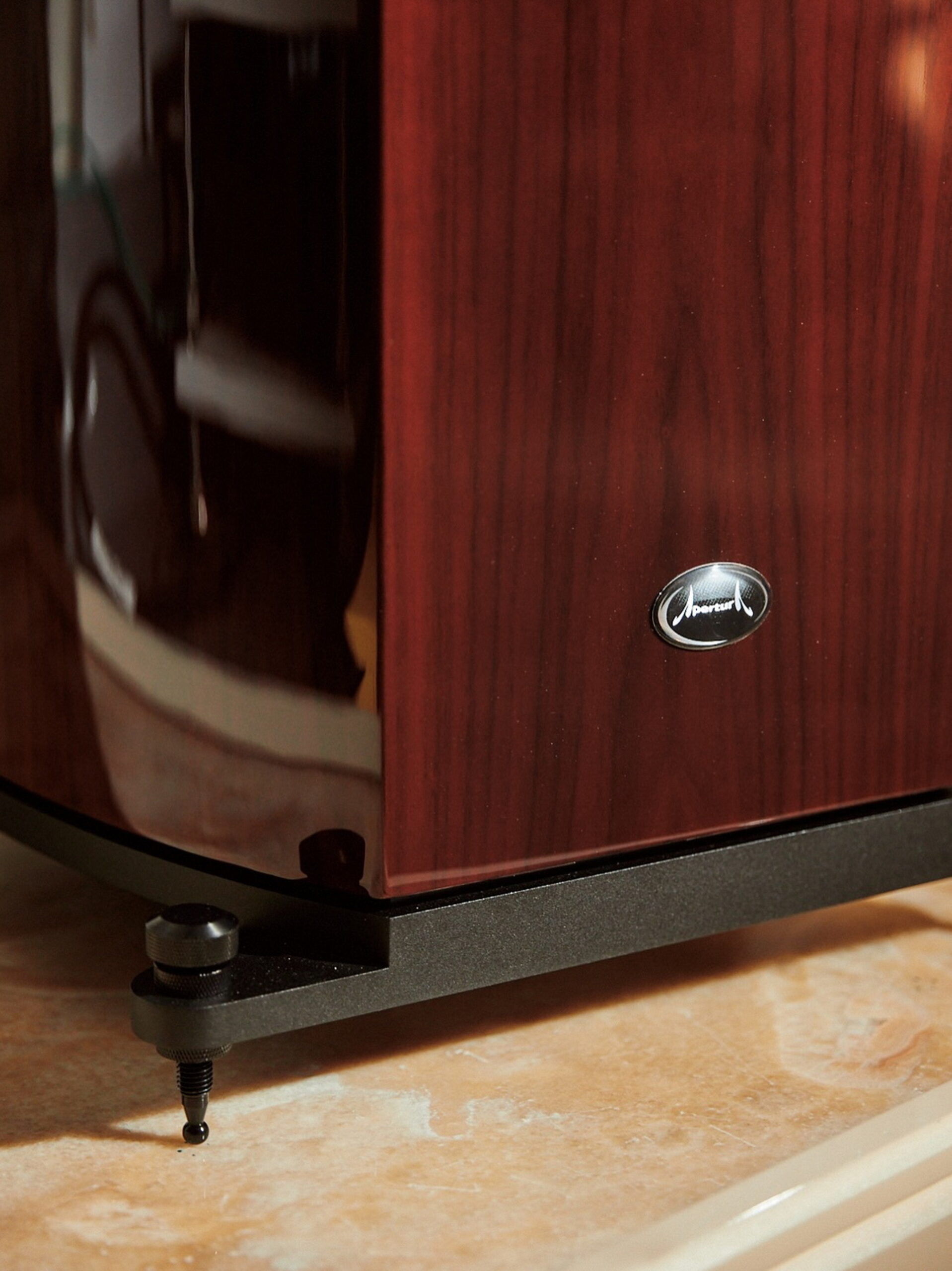
This quality became one of the defining traits of the Enigma MkII and, for us, represents one of its most significant achievements. The fact that it reaches a level where it can compete with true heavyweights such as the Gryphon EOS, Wilson Audio Sasha, and even the Magico S2 says a great deal about its capabilities. When the rest of the system is up to standard, the result is an experience that is live-sounding, immersive, transparent, and deeply rewarding.
Comparisons: How Does the Enigma MkII Stack Up?
No review of a flagship speaker is complete without a look at its closest competition. Over the past months and years, we have spent considerable time with other heavyweights in the same price bracket, most notably the Bowers & Wilkins 802 D4 and the KEF Blade 2 Meta. Each has its own strengths and personality, and each left a distinct impression.
Bowers & Wilkins 802 D4 immediately stands out for its precision in the midrange and its timbral accuracy. Voices and acoustic instruments sound strikingly focused, with a sense of realism that is difficult to fault. Micro-detail retrieval was also a clear strength for the Bowers, surpassing what we heard from the Enigma MkII in this respect. However, from a live, physical perspective, the Bowers were left standing in Enigma’s shadow. The sense of air and effortless space was not as pronounced, and the soundstage never quite achieved that immersive, three-dimensional quality we value most. High frequencies were more prominent and present compared to the Enigma, giving the 802 D4 a certain brilliance, but also making system matching a real challenge. The Bowers demands careful pairing with top-tier electronics to avoid harshness or fatigue, while the Enigma proved to be more forgiving, retaining musicality across a wider range of setups. Sub-bass performance was close between the two, but the Enigma surpassed the 802 D4 in both kick bass impact and maximum sound pressure level. When it comes to projecting live energy into the room, we felt the Enigma goes further.
KEF Blade 2 Meta offers yet another perspective. Of the three, the Blade 2 Meta is the most linear and neutral, with a presentation that neither flatters nor exaggerates any part of the spectrum. Its pinpoint imaging and instrument placement are exceptional, qualities that recall our impressions of the Reference 5, which also excelled in these areas. The Blade 2 Meta’s soundstage and three-dimensionality were very close to those of the Enigma and the Bowers, but the KEF distinguished itself by creating an especially coherent and unified presentation. Thanks to the Uni-Q driver array, the Blade 2 Meta gave a particularly convincing impression that sound was emanating from a single point source, with instruments naturally anchored in space and maintaining their clarity even in the most complex musical passages. However, in terms of sub-bass weight and punch, the Blade 2 Meta was a step behind the Enigma, and did not deliver the same level of physical impact. Matching electronics with the Blade 2 Meta was somewhat easier than with the Bowers, but the speaker remains sensitive to upstream choices, particularly in the amplification department.
In our view, each of these speakers offers its own distinct set of strengths, and each one can be considered a leader in its field depending on the preferences and priorities of the listener. The Bowers & Wilkins 802 D4 immediately impresses with its remarkable midrange precision and vibrant, detailed top-end, making it a superb choice for those who seek absolute focus, clarity, and accuracy in their music. Its presentation brings forward subtle textures and microdetails, ensuring that vocals and acoustic instruments are rendered with outstanding realism and nuance. The Bowers is particularly suited to listeners who value timbral accuracy and an articulate, revealing approach to sound.
The KEF Blade 2 Meta, by contrast, distinguishes itself through its almost-perfect neutrality and precision in soundstaging. Music is presented with an effortless, studio-like clarity that allows each element to occupy its own place in the mix, contributing to a unified, coherent, and highly organized sonic landscape. Thanks to the unique Uni-Q driver array, the KEF manages to achieve an impression of seamlessness and point-source coherence that is truly rare among large floorstanders. Instrument placement, layering, and spatial cues are handled with an exactness that invites analytical listening, yet the Blade 2 Meta never becomes sterile or fatiguing. It is an excellent option for those who appreciate a balanced, transparent window into their music collection, and for listeners who want their loudspeakers to disappear and leave only the performance.
The Apertura Enigma MkII, on the other hand, brings an entirely different and equally compelling set of virtues to the table. This loudspeaker captivates with its exceptional physicality, live character, and the ability to generate a powerful sense of presence and immersion, even at moderate listening volumes. There is a tactile, almost visceral quality to its presentation that draws the listener in, making music not only something to be heard but also something to be felt throughout the room and body. The Enigma MkII excels at recreating the scale, energy, and excitement of live performances, transforming the listening space into a venue filled with authentic musical impact. For those who value engagement, musicality, and a truly immersive experience, the Enigma MkII offers a unique perspective that stands confidently alongside these other high-level contenders, each with its own signature strengths.
Final Words
We spent enough time with the Apertura Enigma MkII to truly understand its personality, and we will admit it was not easy to leave the listening room behind when our sessions came to an end. Experiencing this flagship in a dedicated space gave us the rare chance to hear what it can really do with the right electronics and careful setup. Our thanks go to AVstore for making the space and equipment available, allowing us to push the Enigma MkII to its full potential.
Still, as always, we encourage you not to take our impressions at face value. If you are considering a speaker of this caliber, nothing replaces your own experience. Book a demo, bring along the tracks that move you, and do not hesitate to spend time experimenting with various electronics. Listen both on and slightly off-axis, try a few different amplifiers, and pay attention to how the sound changes as you move through various genres and volume levels. Let the Enigma MkII show you its capabilities and, just as importantly, its character.
Only you can decide if this loudspeaker speaks to your tastes and expectations. If its unique combination of physicality, energy, and refinement resonates with you as it did with us, then you may find yourself, as we did, reluctant to leave the music behind when the session ends.
For listeners who crave energy, engagement, and a tangible, enveloping musical experience, the Enigma MkII delivers a unique perspective that stands confidently alongside these other high-level contenders.
Pros
- Exceptional physicality and presence even at low to moderate volumes; music is felt as much as heard
- Live-like scale and sound pressure levels without losing composure, an energy very rarely encountered in audiophile systems
- Macrodynamics and bass authority set a new standard at this price, with an impactful kick and deep, controlled sub-bass
- An immersive, three-dimensional soundstage that consistently pulls the listener into the music
- Impressive build quality and engineering, with attention to detail evident throughout
Cons
- Micro-dynamics and low-level nuance are not quite at the level of the very best in this class
- The tweeter can become harsh and fatiguing if paired with bright electronics and cables.
- Lack of port tuning options means bass character cannot be tailored to all rooms or tastes

